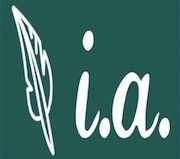JS: No matter how horrible you think it was, those two bombs saved a lot of lives on both sides. Estimates of what it would have cost to take the rest of the islands based upon the early engagements say that it would have cost somewhere between 11 and 35 million more lives before the current conventional war would have ended.
Wiping out two cities, three days apart, without losing any lives was something that had not been done before. The shock and awe it caused in both the Japanese government and the civilian population allowed Japan to justify surrender.
The rest of the world learned a lot from those bombings and the subsequent rebuilding of Japan. For the first time, we knew beyond a shadow of a doubt that radiation sickness wasn’t something theoretical. Aid workers sent to Japan documented the slow and horrible death most suffered from radiation poisoning. We learned how to measure residual radiation and what black rain was.
Oddly enough, a thing that caused so much death and destruction ended up providing scientific data that would lead to x-ray machines and treatments for some kinds of cancer.
SK: Sounds like you are trying to put a positive spin on it.
JS: It’s not a matter of spin. The sad truth is, few things advance science and technology more than large-scale warfare. It appears humans are destined to kill each other in order to improve the species.
SK: That’s a rather cold statement and not to be believed by many.
JS: Only because the oldest person you know is 62 and you don’t have a library with books much older than that.
SK: How can you be certain of that?
JS: All of the history books covered the Second World War and the first use of nuclear weapons. If you have any older books, they must be grammar or math. Even the dictionaries had the definition of a nuke.
SK: We have old books!
JS: Old compared to what?
SK: Older than you.
JS: So you say, but were they worth saving or did they just happen to survive?
SK: We treasure our central library. It is the largest one in the known world. It occupies 3,000 square feet on the second floor of our government building.
JS: A whole 3,000 square feet you say? I bet it’s a real treasure trove. Answer me this: When you print your newspaper, is it done with a massive machine that feeds giant rolls of paper while printing on both sides of each sheet, and then cutting and folding in the same pass?
SK: No. I’ve never heard of such a thing. We have two presses that use large sheets of paper. We set up the front side of all pages in one press and the back side in the other. We run all of the sheets through the first press, then turn them over and run them through the second.
JS: Ah, you have a sheet fed press with moveable type.
SK: Yes, I believe that is what it is called, so what?
JS: Do any of those books in your massive library tell you who invented the printing press or when?
SK: Why…I’m not certain.
JS: You have electricity in your city, do you not?
SK: Yes, in some of it. At the newspaper, definitely. It is generated by a large dam on the river where we get our drinking water.
JS: Do any of those wonderful books in your library tell you who discovered electricity or how to build a generator?
SK: I’m sure one of them must.
JS: You are, are you? Well then, are your presses operated by electric motors?
SK: Of course.
JS: Do any of those motors have a metal tag stating their specifications and who made them?
SK: Yes. I’ve seen that while helping with the printing when I first started. They said something like Leman from some place called Wee.
JS: I will hazard a guess that you really mean Leeson Electric out of a state called Wisconsin, which was abbreviated to W and I by the post office.
SK: That could be it. Now that I think about it, I think you are right, although I’ve never heard of Wisconsin.
JS: It used to be a state north of us. Old north that is. Now most of it is under that body of water to the east.
SK: I really find all of this hard to believe, as will our readers.
JS: Fine. You tell me where Wisconsin is.
SK: I can’t.
JS: Just like you can’t tell me who invented the printing press, who, by the way, was a man called Gutenberg around 1440—at least during this cycle. Just like you can’t tell me who built that dam, which is providing power to your city, or tell me how it provides power. Just like you can’t tell me why only part of your city has power and the rest doesn’t.
SK: Well, yes.
JS: At least I can answer that last part. The part of your city that doesn’t have electricity is new. In order to wire a house, you need various gauges of insulated electrical wire, circuit breaker panels, wall outlets and switches, along with light fixtures and bulbs. You no longer have access to factories that make all of the components.
Instead of not believing what I say, you should ask yourself how it is you are using devices hundreds of years old when your recorded history only goes back 62 years.
***********************
You are reading a special promotional version of “John Smith – Last Known Survivor of the Microsoft Wars.” This is the third book of the “Earth That Was” trilogy. You can obtain the entire trilogy in EPUB form from here:


